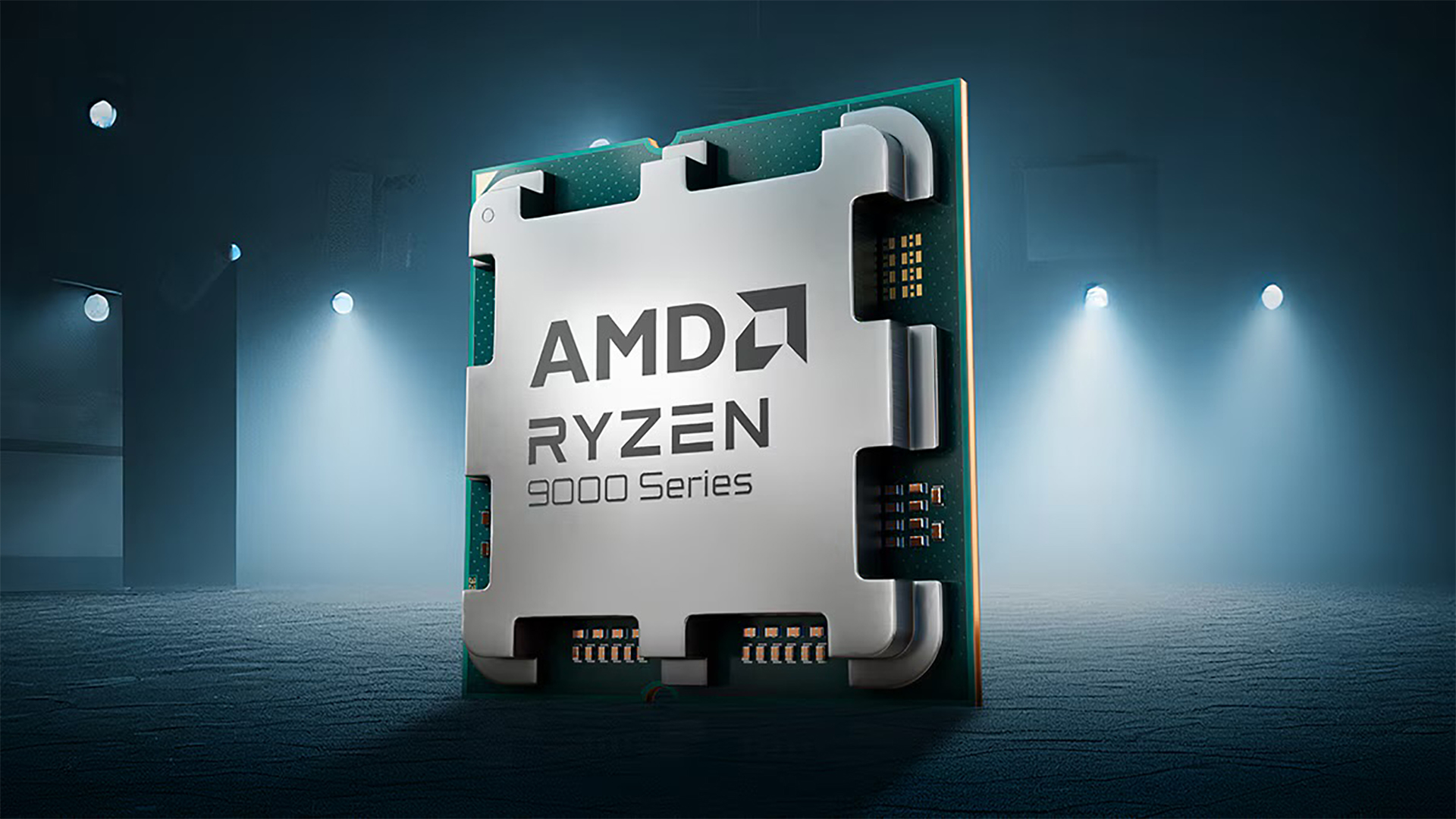New Ryzen 9000X3D CPU could deliver EPYC levels of game-boosting L3 cache — rumored chip reportedly sports 16 Zen 5 cores, 192MB L3 cache, 200W TDP

AMD already sells some of the best CPUs on the retail market. However, hardware leaker chi11eddog claims that the chipmaker might capitalize on the success of the Ryzen 9000X3D series and introduce two more models to the already diverse family.
The new processors will continue to utilize the Granite Ridge silicon with Zen 5 execution cores. One of the two rumored models will reportedly have 16 cores with simultaneous multithreading (SMT), a configuration similar to the Ryzen 9 9950X3D and the regular Ryzen 9 9950X. However, the most surprising feature resides in the L3 cache. According to the leaker, the 16-core X3D part will reportedly employ a dual CCD (Core Complex Die) configuration. While AMD has previously released Ryzen chips with dual CCDs, the chipmaker has never slapped 3D V-Cache on both CCDs.
As a quick refresher, each CCD is equipped with 32MB of L3 cache and 64MB of 3D V-Cache, totaling 96MB of total L3 cache per CCD. Consequently, a chip featuring two CCDs would logically increase the maximum L3 cache to 192MB, which is 50% more than the amount found in the Ryzen 9 9950X3D. Although we have encountered 192MB of L3 cache as far back as AMD’s EPYC 7002 (codenamed Rome) processors from the Zen 2 era, it remains an unprecedented feat for a consumer processor to possess such a substantial amount of L3 cache.
Apparently, the Ryzen 9000X3D SKU with 3D V-Cache on both CCDs could have a 200W TDP. This is because the additional 3D V-Cache on the other CCD consumes more power, which explains the higher TDP. For now, we don’t have an idea whether the clock speeds will be the same or higher. Compared to the Ryzen 9 9950X3D, the upcoming SKU could consume 18% more power.
AMD Ryzen 9000X3D Specifications
Processor | MSRP | Architecture | Cores / Threads | Base / Boost Clock (GHz) | L3 Cache (MB) | TDP (W) |
|---|---|---|---|---|---|---|
?* | ? | Zen 5 X3D | 16 / 32 | ? | 192 | 200 |
Ryzen 9 9950X3D | $699 | Zen 5 X3D | 16 / 32 | 4.3 / 5.7 | 128 | 170 |
Ryzen 9 9900X3D | $599 | Zen 5 X3D | 12 / 24 | 4.4 / 5.5 | 128 | 120 |
Ryzen 7 9800X3D | $480 | Zen 5 X3D | 8 / 16 | 4.7 / 5.2 | 96 | 120 |
?* | ? | Zen 5 X3D | 8 / 16 | ? | 96 | 120 |
*Specifications are unconfirmed.
The second rumored processor allegedly boasts eight cores, sixteen threads, and a 96MB L3 cache. The leaker suggests that it’s a 120W processor. These specifications are reminiscent of the Ryzen 7 9800X3D, which shares similar characteristics. Notably, the leaker did not disclose the clock speeds. However, the new SKU will probably be a lower-clocked variant of the Ryzen 7 9800X3D, possibly a Ryzen 7 9700X3D or a similar model.
Ryzen processors with a single CCD generally offer better gaming performance compared to those with two CCDs. This applies to the Ryzen X3D variant as well since the 3D V-Cache is only present on one of them. The disadvantage of dual CCDs is the introduction of latency, which negatively impacts performance because data has to travel across the CCDs instead of a single CCD. Consequently, the Ryzen 7 9800X3D outperforms the Ryzen 9 9950X3D. It would be intriguing to assess how having 3D V-Cache on both CCDs could enhance performance and possibly reduce latency.
Get Tom's Hardware's best news and in-depth reviews, straight to your inbox.
The technology was always there. AMD could easily integrate 3D V-Cache into any number of CCDs it desired. It wasn’t a question of whether AMD could or couldn’t do it; it was a matter of whether the chipmaker wanted to do it. Logically, producing a single CCD Ryzen 9000X3D is already expensive, so adding the L3 SRAM to both CCDs would make it even more costly. The Ryzen 9 9950X3D, which has a $699 MSRP, is already selling for $669. Introducing a new 16-core SKU with 192MB L3 cache will bring the MSRP closer to Ryzen Threadripper levels. AMD already has the ultimate gaming champion in the Ryzen 7 9800X3D and a productivity powerhouse in the Ryzen 9 9950X3D. So, AMD releasing an even higher-end part may be more about spurring sales of its platform rather than a need to stay ahead of its CPU competition.
Follow Tom's Hardware on Google News to get our up-to-date news, analysis, and reviews in your feeds. Make sure to click the Follow button.

Zhiye Liu is a news editor, memory reviewer, and SSD tester at Tom’s Hardware. Although he loves everything that’s hardware, he has a soft spot for CPUs, GPUs, and RAM.
-
ejolson X3D Cache on both dies of the 16-core part is what I expected in the first release. For my use case--low-cost scientific workstation--this makes the 16 core part very good.Reply -
Eximo Yields must be pretty good for them to want to risk putting two of them on a single package.Reply -
emike09 I have a feeling sales will be low. Many people who wanted the 9950x3D, even though only one CCD had 3D vCache, have already bought a 9950x3D. Hopefully they don't view low sales as an indicator that people don't want it. I'd be very curious to see benchmarks in heavily multithreaded games like FS2020/2024, AW2, Satisfactory, etc, as well as production workloads.Reply
I probably wouldn't replace my 9950x3D with it quite yet, but the idea of a 16-core Zen 6 with x3D cache on both dies would 100% be a buy for me. -
DS426 Reply
GPU's are the bottleneck in most games, not 9800X3D or higher. The only way to really bog these down is to run benchmarks at 1080P, which is synthetically low for the part considering many to most owners of these chips are rocking high-end GPU's and therefore usually running at 1440P or 4K.emike09 said:I have a feeling sales will be low. Many people who wanted the 9950x3D, even though only one CCD had 3D vCache, have already bought a 9950x3D. Hopefully they don't view low sales as an indicator that people don't want it. I'd be very curious to see benchmarks in heavily multithreaded games like FS2020/2024, AW2, Satisfactory, etc, as well as production workloads.
I probably wouldn't replace my 9950x3D with it quite yet, but the idea of a 16-core Zen 6 with x3D cache on both dies would 100% be a buy for me.
The high-core-count Zen 6 X3D will likely actually have 24-cores since Zen 6 is going to 12-core CCD's. Even then, we'll have to see what Z6's IPC and clocks uplift are as otherwise, the extra cores won't help with 99% of games. -
usertests Reply
That and a good supply of the cache chiplets. Do you know what node the latest ones used with Zen 5 CPUs are one?Eximo said:Yields must be pretty good for them to want to risk putting two of them on a single package.
This is a good part for workstation-lite people who have workloads that benefit from 3D cache, or people who want 16-core, 3D cache, and zero scheduling issues.emike09 said:I have a feeling sales will be low. Many people who wanted the 9950x3D, even though only one CCD had 3D vCache, have already bought a 9950x3D. Hopefully they don't view low sales as an indicator that people don't want it. I'd be very curious to see benchmarks in heavily multithreaded games like FS2020/2024, AW2, Satisfactory, etc, as well as production workloads.
If there is a game that could actually show a significant benefit from two CCDs having 3D cache, that would be wild. I doubt it exists, but if you programmed specifically for this processor, it wouldn't need to be heavily multi-threaded. You would just use at least one core on each CCD, with those cores using up as much cache as they can.
Maybe the scheduler can make that happen, i.e. if at least one core on each CCD can boost really high at the same time, because the thermal load is spread out, then they will naturally use both pools of cache.
Having a larger cache pool (Zen 6 X3D should have 12 cores with 144 MiB on a CCD instead of 96 MiB) is going to be more broadly beneficial. But if some developer really wanted to show off, they might be able to force dual cache to be leveraged.
This is a rumor though, so don't get too excited. -
Eximo Reply
Presumably the same node as all of Zen 5. TSMC N4X. At least desktop, HEDT, and server.usertests said:That and a good supply of the cache chiplets. Do you know what node the latest ones used with Zen 5 CPUs are one? -
usertests Reply
I doubt it. Zen 4 used N5 for CCDs, and N7 for the cache chiplet. Cache doesn't shrink very well.Eximo said:Presumably the same node as all of Zen 5. TSMC N4X. At least desktop, HEDT, and server.
https://www.tomshardware.com/news/amd-shares-new-second-gen-3d-v-cache-chiplet-details-up-to-25-tbsOverall, AMD's second-gen 3D V-Cache technology is an impressive step forward over the first-gen because it allows the company to leverage the now-mature and less-expensive 7nm process node to boost the performance of its cutting-edge 5nm compute die.
-
Eximo Reply
That is listed for the Zen 5 cores, N4X. If they used a different process for the cache, it was not listed. N6 for the I/O though.usertests said:I doubt it. Zen 4 used N5 for CCDs, and N7 for the cache chiplet. Cache doesn't shrink very well.
https://www.tomshardware.com/news/amd-shares-new-second-gen-3d-v-cache-chiplet-details-up-to-25-tbs
I should add that the node naming isn't exactly a match for a true node shrink, just refinements. TSMC '7nm' includes N6, TSMC '5nm' includes all the 4 nodes. and '3nm' will include 3 and 2 'class' nodes. -
A Stoner Oh, now I am more interested in upgrading my 7950X3D. I think I will have to be extra nice to the wife so when I splurge $2000 she will not be too upset...Reply -
usertests Reply
Ok, I found it, it's still on TSMC "7nm":Eximo said:That is listed for the Zen 5 cores, N4X. If they used a different process for the cache, it was not listed. N6 for the I/O though.
I should add that the node naming isn't exactly a match for a true node shrink, just refinements. TSMC '7nm' includes N6, TSMC '5nm' includes all the 4 nodes. and '3nm' will include 3 and 2 'class' nodes.
https://www.tomshardware.com/pc-components/cpus/amd-ryzen-7-9800x3d-review-devastating-gaming-performanceThe new L3 cache chiplet is based on the same 7nm SRAM-optimized process node that AMD used in the previous two generations of 3D V-Cache technology in a technique that AMD now refers to as its 'Second-Gen 3D V-Cache' technology (this is an odd branding choice — this is actually the third refinement of the technology).